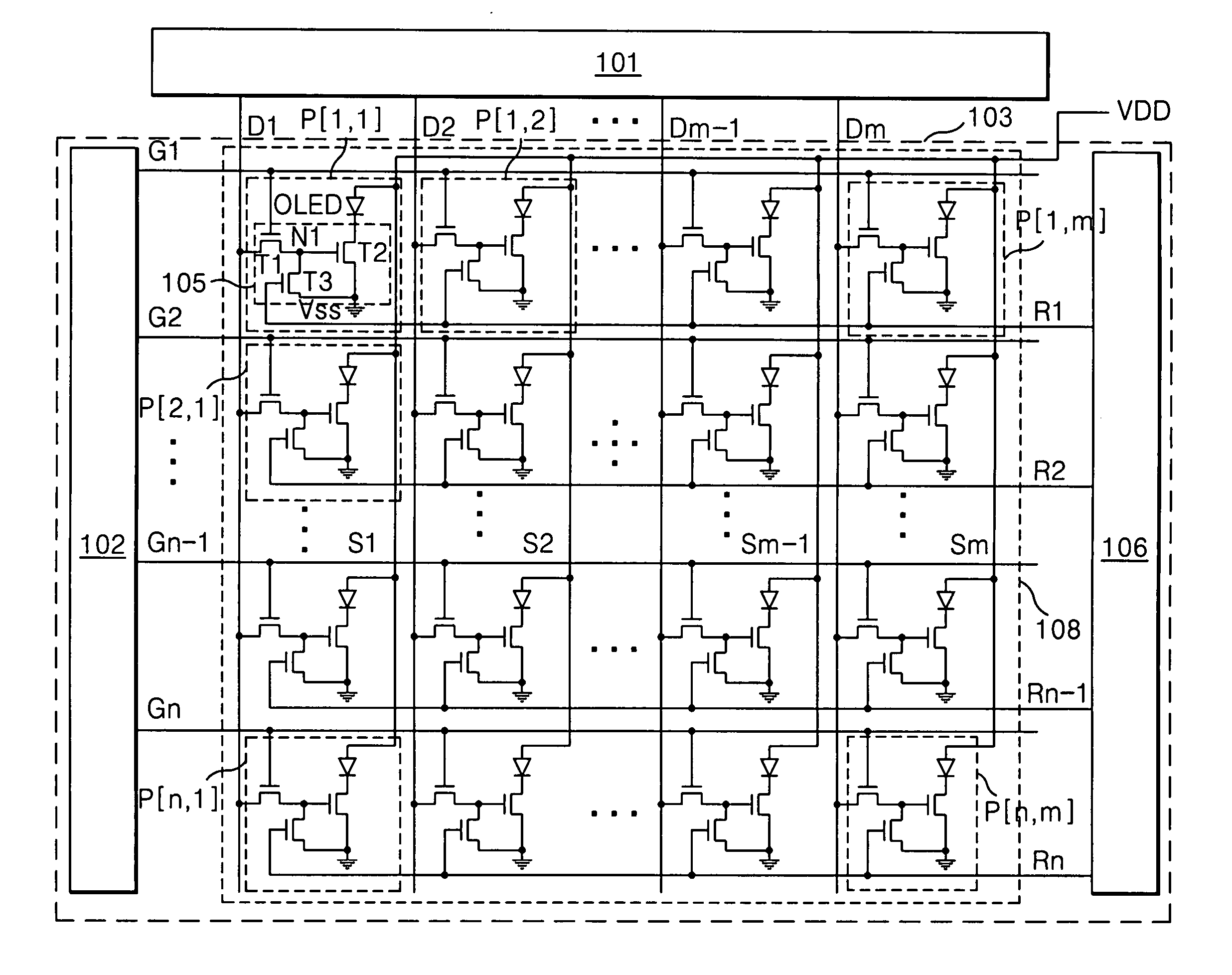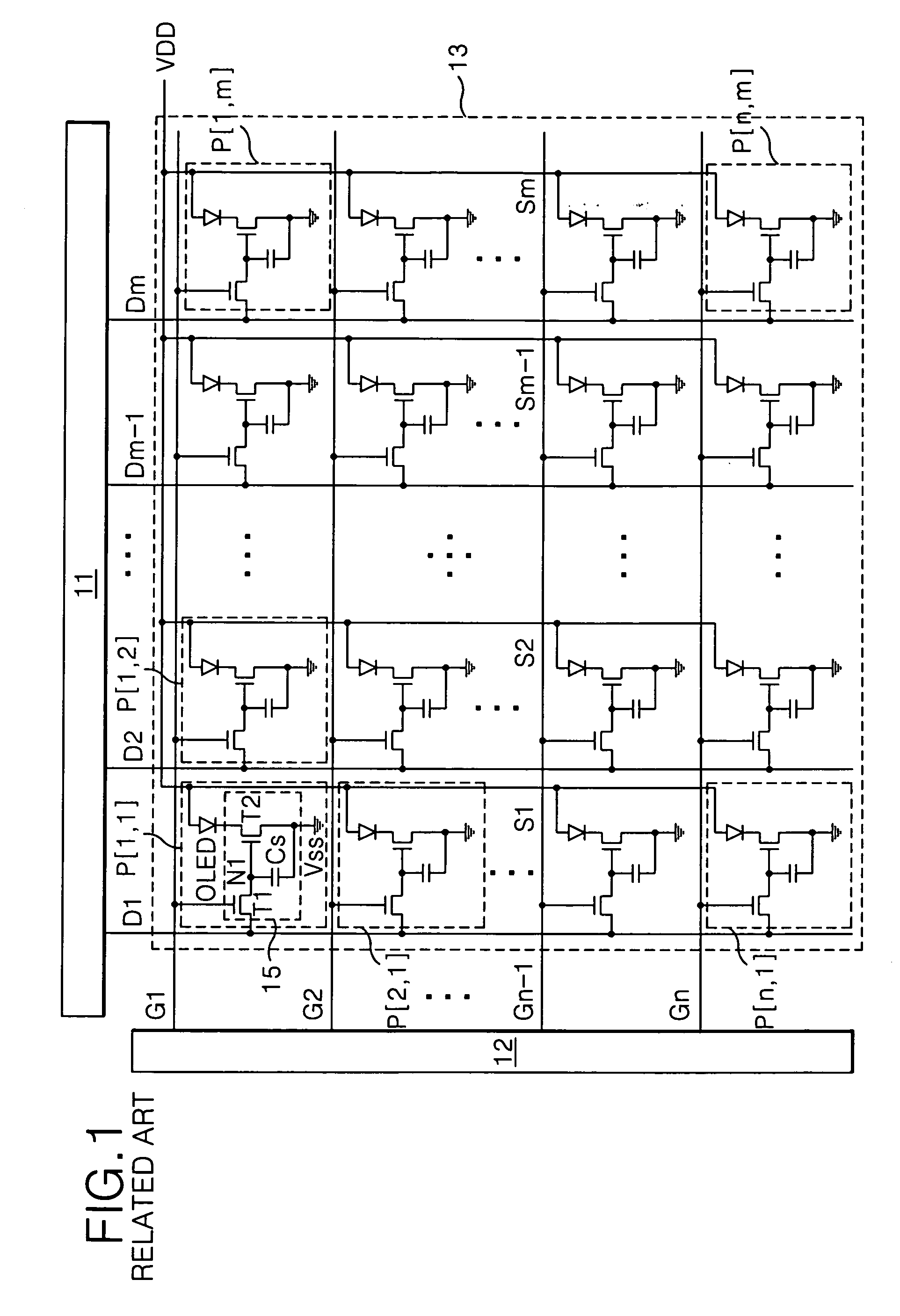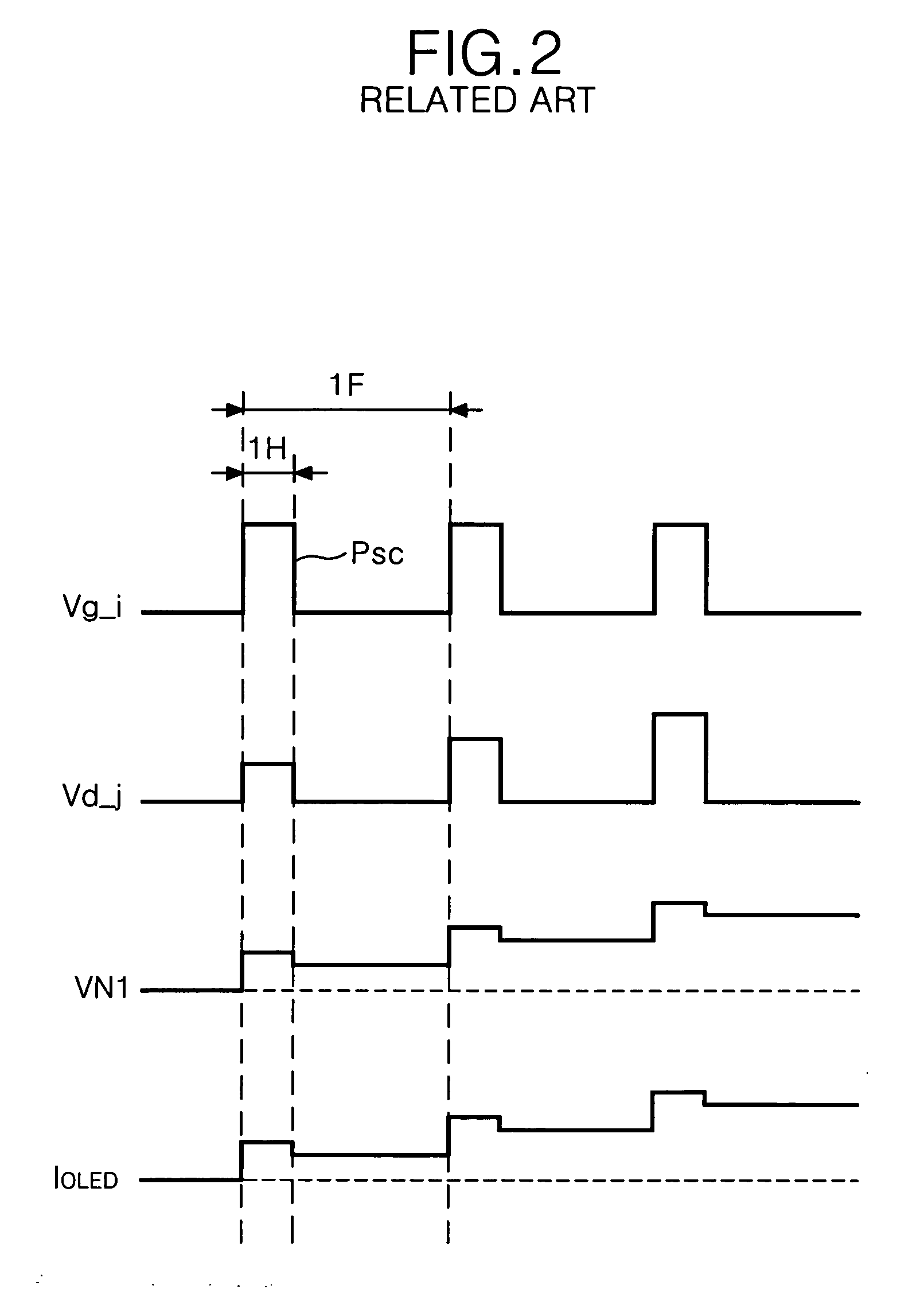Organic light emitting diode display
- Summary
- Abstract
- Description
- Claims
- Application Information
AI Technical Summary
Benefits of technology
Problems solved by technology
Method used
Image
Examples
second embodiment
[0072]FIG. 10 is a block diagram representing a scan drive circuit and a reset drive circuit of FIG. 5 or 9.
[0073] Referring to FIG. 10, the scan drive circuit 102 and the reset drive circuit 106 each includes n stages (1st to nth stages) that are connected in cascade.
[0074] In the scan drive circuit 102, a first start signal Vst1 is input to a first stage, and a pre-stage scan signal Vg_i−1 is input to second to nth stages as the start signal. The next-stage scan signal Vg_i+1 is input to the first to (n−1)th stages as a stage reset signal, and a stage reset signal from a dummy stage (not shown) is input to the nth stage. Further, each stage substantially has the same circuit configuration and shifts the first start signal Vst1 or pre-stage scan signal Vg_i in response to any one clock signal among four clock signals C1 to C4, thereby generating a scan signal having a pulse width of one horizontal period.
[0075] The second start signal Vst2 is generated later than the first start ...
first embodiment
[0076]FIG. 11 is a circuit diagram representing the scan drive circuit and the reset drive circuit of FIG. 10 in detail.
[0077] Referring to FIG. 11, the scan drive circuit 102 includes a first transistor T1 that discharges a Q node of the stage 201 to 20n in response to the reset signal Vr_1 to Vr_n from the reset lines R1 to Rn, and the reset drive circuit 106 includes a second transistor T2 that discharges a Q node of the stage 601 to 60n in response to the scan signal Vg from the scan lines G1 to Gn.
[0078] In the scan drive circuit 102, if the start signal Vst1 is input to a set terminal S of the first stage 201, the Q node is charged and the QB node is discharged in the stage 201. Subsequently, the first scan signal Vg_1 is supplied to the first scan line G1 through a pull-up transistor T-up when the first clock signal C1 having a high logic voltage is input to the first stage 201 when the Q node is charged. At the same time, the first scan signal Vg_1 is supplied to the set te...
third embodiment
[0096]FIG. 13 is a circuit diagram representing the scan drive circuit and a reset drive circuit shown in FIG. 10, in detail.
[0097] Referring to FIG. 13, the scan drive circuit 102 includes a first transistor T1 that discharges the Q node of the stage 201 to 20n in response to the reset signal Vr_1 to Vr_n from the reset lines R1 to Rn; and a third transistor T3 that discharges the scan lines G1 to Gn in response to the reset signal Vr_1 to Vr_n.
[0098] The reset drive circuit 106 includes a second transistor that discharges the Q node of the stage 601 to 60n in response to the scan signal Vg from the scan lines G1 to Gns; and a fourth transistor T4 that discharges the reset lines R1 to Rn in response to the scan signals Vg_1 to Vg_n from the scan lines G1 to Gn.
[0099] A source electrode of the first transistor T1 is connected to the Q node of the stages 201 to 20n included in the scan drive circuit 102, and a drain electrode thereof is connected to the low level power supply volta...
PUM
 Login to View More
Login to View More Abstract
Description
Claims
Application Information
 Login to View More
Login to View More - R&D
- Intellectual Property
- Life Sciences
- Materials
- Tech Scout
- Unparalleled Data Quality
- Higher Quality Content
- 60% Fewer Hallucinations
Browse by: Latest US Patents, China's latest patents, Technical Efficacy Thesaurus, Application Domain, Technology Topic, Popular Technical Reports.
© 2025 PatSnap. All rights reserved.Legal|Privacy policy|Modern Slavery Act Transparency Statement|Sitemap|About US| Contact US: help@patsnap.com



